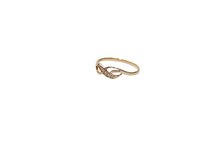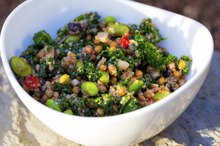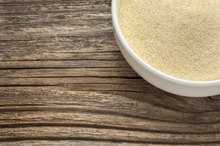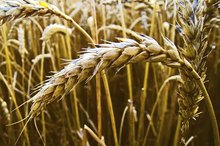What does fact checked mean?
At Healthfully, we strive to deliver objective content that is accurate and up-to-date. Our team periodically reviews articles in order to ensure content quality. The sources cited below consist of evidence from peer-reviewed journals, prominent medical organizations, academic associations, and government data.
- Oral Surgery, Oral Medicine, Oral Pathology, Oral Radiology, and Endodontology: Amylophagia and Iron Deficiency Anemia
- Oral Surgery, Oral Medicine, Oral Pathology, Oral Radiology, and Endodontology: Amylophagia and Iron Deficiency Anemia
- La Revue de Medecine Interne: Anemia Caused by Iron Deficiency and Pagophagia. Apropos of a Case
- La Revue de Medecine Interne: Anemia Caused by Iron Deficiency and Pagophagia. Apropos of a Case
- Archives of Family Medicine: Amylophagia Presenting as Gestational Diabetes
- Archives of Family Medicine: Amylophagia Presenting as Gestational Diabetes
The information contained on this site is for informational purposes only, and should not be used as a substitute for the advice of a professional health care provider. Please check with the appropriate physician regarding health questions and concerns. Although we strive to deliver accurate and up-to-date information, no guarantee to that effect is made.
Can You Get Sick From Eating Bad Cornstarch?
Eating cornstarch cannot only make you sick, but also it can indicate the presence of underlying conditions such as mineral deficiencies or gestational diabetes. Cravings for cornstarch and other non-digestible things is a red light you should heed and a warning to make an appointment to see your health practitioner for tests.
What is Cornstarch?
Cornstarch is derived from the endosperm at the heart of corn kernels. It is used in cooking as a thickening agent and, in some cases, as a substitute for talc in body powders. Cornstarch does not demonstrate toxicity itself; however, for some people who crave it by itself, it can indicate various mineral deficiencies.
Pica
How to Stop Eating Corn Starch
Learn More
Eating cornstarch and other non-food items such as dirt, sand, feces or paper is called pica. Adults and children can suffer from pica; however, it is more common in young children, according to the A.D.A.M Medical Encyclopedia. Pregnant women may find themselves craving indigestible things because of a mineral deficiency or lack of nutrients such as zinc or iron. Pica is not only a craving for non-food materials, but for the feel of certain textures.
- Eating cornstarch and other non-food items such as dirt, sand, feces or paper is called pica.
- Pica is not only a craving for non-food materials, but for the feel of certain textures.
Symptoms, Signs and Tests
Symptoms for pica range from eating a variety of non-food materials such as hair, ice, sand, paint and clay. The pattern of doing so should last a minimum of one month before making a diagnosis, according to the A.D.A.M Medical Encyclopedia. There are no definitive tests for pica; however, because it usually occurs in people suffering from mineral deficiencies, blood tests are often performed to check levels of iron and zinc -- the most common deficiencies. Additionally, your health practitioner should test for infection and lead poisoning if contaminated soil, animal feces or paint was consumed. Treatment often focuses on replacing missing nutrients, resolving other medical conditions and changing behaviors through therapy. Sometimes medications are prescribed.
- Symptoms for pica range from eating a variety of non-food materials such as hair, ice, sand, paint and clay.
- There are no definitive tests for pica; however, because it usually occurs in people suffering from mineral deficiencies, blood tests are often performed to check levels of iron and zinc -- the most common deficiencies.
Amylophagia
The Gold Ring Test on Cheek for Iron Deficiency
Learn More
Amylophagia is a form of pica and is specific to the compulsive consumption of large amounts of purified starch. It is common to see this condition arise in women during pregnancy. The Archives of Family Medicine note that amylophagia is also a symptom of possible gestational diabetes during pregnancy 3. Amylophgaia is distinct from regular pica because it involves only a craving for refined starch such as cornstarch. Amylophagia may also be related to iron deficiency anemia, according to the journal of Oral Surgery, Oral Medicine, Oral Pathology, Oral Radiology, and Endodontology 1. This condition is seen more often in ethnic women.
- Amylophagia is a form of pica and is specific to the compulsive consumption of large amounts of purified starch.
- It is common to see this condition arise in women during pregnancy.
Additional Concerns
Eating large quantities of cornstarch can also lead to severe constipation and blockages of the bowel. There is also some anecdotal evidence that eating genetically modified cornstarch, or GMOs, may lead to additional loss of nutrition as well as ulcers, acid reflux and digestive upsets of all kinds.
Related Articles
References
- Oral Surgery, Oral Medicine, Oral Pathology, Oral Radiology, and Endodontology: Amylophagia and Iron Deficiency Anemia
- La Revue de Medecine Interne: Anemia Caused by Iron Deficiency and Pagophagia. Apropos of a Case
- Archives of Family Medicine: Amylophagia Presenting as Gestational Diabetes
- Cunningham F, Leveno KJ, Bloom SL, Spong CY, Dashe JS, Hoffman BL, Casey BM, Sheffield JS. Prenatal Care. In: Cunningham F, Leveno KJ, Bloom SL, Spong CY, Dashe JS, Hoffman BL, Casey BM, Sheffield JS. eds. Williams Obstetrics, Twenty-Fourth Edition. New York, NY: McGraw-Hill; 2013.
- Lacey EP: Phenomenology of pica. Child Adolesc Psychiatr Clin N Am 1993;2:75.
- McAdam DB,Sherman JA,Sheldon JB,Napolitano DA: Behavioral interventions to reduce the pica of persons with developmental disabilities. Behav Modif 2004;28:45–72.
Writer Bio
Jean Bardot is a freelance writer and natural health practitioner. She started writing in 1994 and has contributed articles to publications such as "Similimum" and the "IFH Journal." She has a Bachelor of Science in public health from the University of North Carolina and a Master of Science in holistic nutrition from Clayton College of Natural Health.









